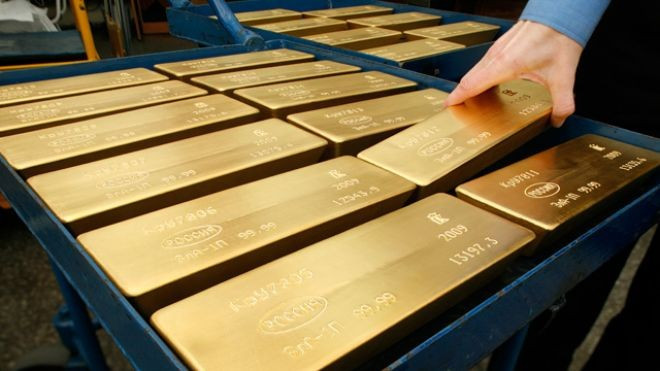Commodities Round-up: Dollar dip extends gold uptick, oil rally halted by US stockpile data
Gold futures lead precious metals higher for third successive session, but oil rally came to a halt.

Precious metal contracts extended gains for a third successive session on Thursday (5 January) as the dollar weakened against a basket of global currencies and safe-haven investors continued to pile into the gold market, with little over two weeks left to Donald Trump's inauguration as US president.
At 5.02pm GMT, the Comex gold futures contract for February delivery was up 1.54% or $17.90 at $1,183.20 an ounce, while spot gold was 1.65% or $19.25 higher at $1,182.90 an ounce, as the dollar slipped against the yen changing hands at JPY115.48, while the pound and euro rose 0.77% and 1.02% changing hands at $1.2418 and $1.0596 respectively.
FXTM research analyst Lukman Otunuga said gold could trade in its current chaotic fashion for the first quarter of 2017 if the messy mixture of uncertainty in Europe, Brexit woes and prospects of higher US rates trigger explosive levels of volatility.
"The fierce tug of war between risk aversion and rising US interest rates may cause the yellow metal to violently swing between losses and gains.
"Although gold prices have been elevated in recent days following the growing physical demand from major consumers such as India and China, a resurgent dollar could limit upside gains. Technically, the metal remains under pressure on the daily charts and sellers could utilise the $1,175 resistance to drag prices lower towards $1,125."
Elsewhere in the precious metals market, Comex silver was up 0.68% or 11 cents at $16.67 an ounce, while spot platinum was up 3.07% or $28.96 to $972.30 an ounce.
Meanwhile, oil futures slipped back into negative territory following gains of over 1.5% in Asian trading, after reports suggested Saudi Arabia had commenced talks with its customers about reducing oil shipments.
Later in the session, the US Energy Information Administration said the country's crude stockpiles saw a reduction of 7.1 million barrels over the past week. However, data suggested stocks of gasoline and distillates had surged as refiners ramped up production to reduce crude inventories ahead of the approaching US driving season, sending oil prices lower.
At 5.14pm GMT, the Brent front month futures contract was down 0.25% or 17 cents at $56.32 per barrel, while the West Texas Intermediate (WTI) was 0.30% or 16 cents lower at $53.10 per barrel.
On Tuesday, Brent and WTI contracts rose by over 2.5% to an 18-month high after Kuwait and Oman moved to honour their output reduction pledge, made as part of an agreement between Opec and non-Opec producers to rebalance an oversupplied market.
Fawad Razaqzada, market analyst at Forex.com, said the market remains fixated on the Opec and non-Opec deal. "I would be very surprised if producer nations breached their agreed quotas by noticeable margins because while that might be profitable in the short-term, it could be very costly in the long-term. Why sell more oil for less when there is a chance to sell less oil for more in the future?
"For that reason, I do think that oil prices will probably rise further in the weeks and months to come. Brent's technical bias remains bullish above the shaded $52.80-$54.30 range while WTI's corresponding support range is at $50.90-$51.90 area."
© Copyright IBTimes 2025. All rights reserved.






















